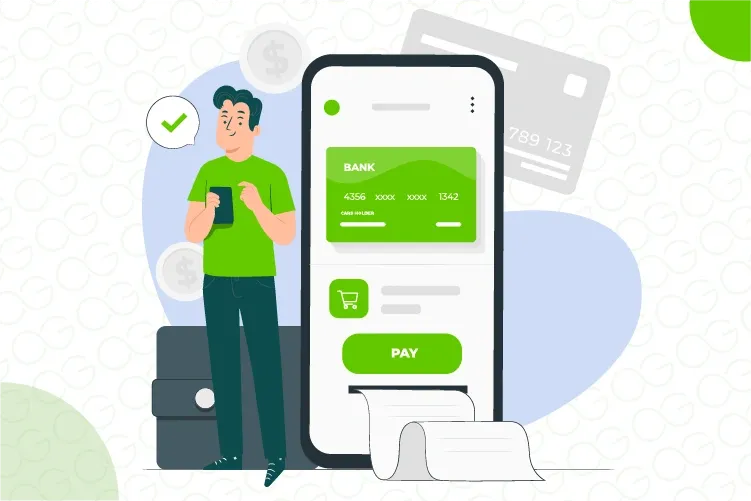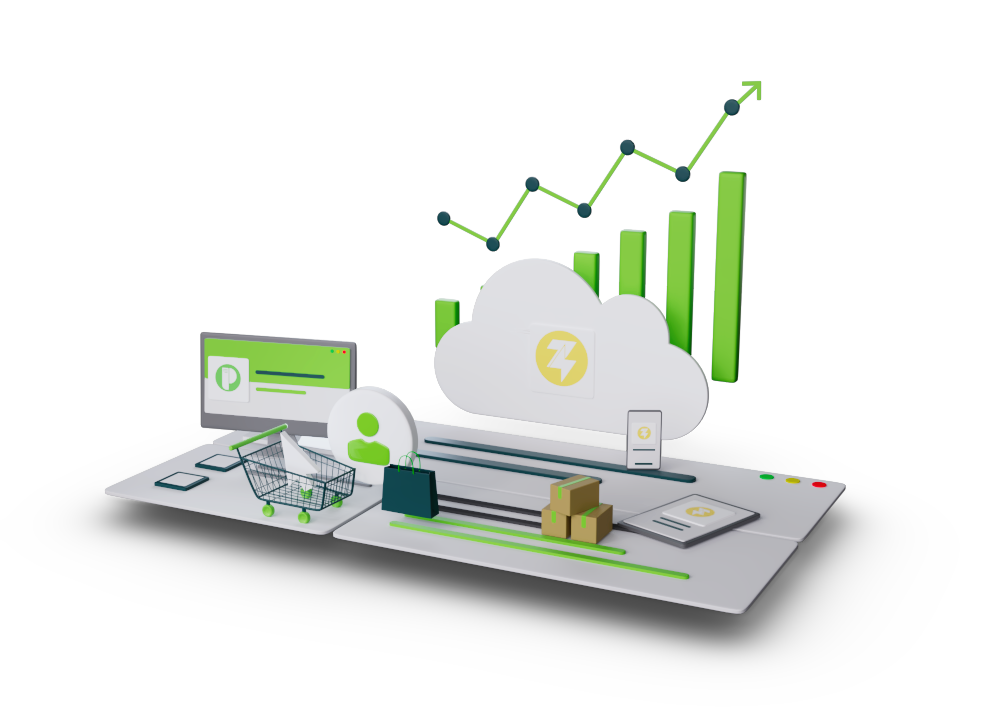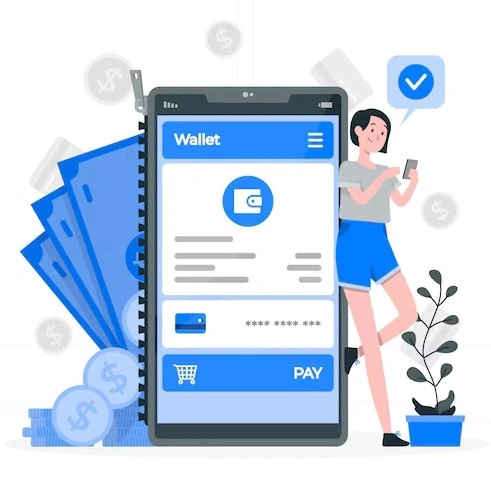The Impact of Digital Wallets and UPI on Organized Retail Transactions

Digital wallets and UPI have ushered in a new era in Indian retail payments. In February last year, UPI processed ₹21.48 trillion in transactions. Companies like Paytm, PhonePe and Google Pay have transformed payments by making UPI and wallets easy and ubiquitous. Meanwhile, point-of-sale infrastructure has expanded to support this shift (India now has about 9 million POS terminals accepting digital payments). These trends illustrate how India’s once cash-heavy retail sector is rapidly going cashless.
In practice, this transformation is visible on every shop floor. Even small kirana stores now display QR codes for UPI and wallets. RBI data shows how the trend favours digital with the decline of monthly mobile wallet transactions as UPI usage soared. This means consumers increasingly prefer instant digital methods over cash or even traditional wallet top-ups. Organized retailers are responding to this; they report wide adoption of UPI at checkout and even offer wallet incentives for customers. The result is a fundamentally new payment landscape where cash is steadily losing ground to interoperable, instant payments.
Why Unified Digital Payments are So Powerful
A unified digital payment system lets retailers accept any customer funds through one interface. For instance, UPI links multiple bank accounts into one mobile app and QR-based payments mean a single merchant code can be scanned by any UPI or wallet app. Similarly, wallets let users preload multiple cards or bank accounts in one app. This consolidation simplifies things for merchants: they no longer need separate terminals or apps for every payment type.
By reducing checkout complexity, unified payments also cut customer friction. In e-commerce, even small obstacles can scare off buyers. Industry data show that nearly 70% of online shopping carts are abandoned due to payment friction. By offering a single-click or single-scan option (via UPI or a wallet), retailers can dramatically boost conversion rates, since customers aren’t forced to navigate multiple forms or payment portals.

Simplify retail operations with Ginesys’s unified POS and UPI integration for faster, frictionless customer checkouts.
Connecting Online and Offline with Seamless Transaction Flows
Digital wallets and UPI enable a consistent payment experience whether shopping on a website, a mobile app, or in a physical store. Customers now expect to use the same payment method across all channels: they don’t want to switch from their preferred UPI app on the web to a different system in-store. In practice, this means a retailer’s payment system should speak one language.
This unity of payment data also streamlines returns and exchanges. When online and offline sales use the same payment identifiers, refunds become much easier. In an omnichannel system, all of a customer’s transactions are recorded centrally, so the retailer can process a return on any channel without confusion. For instance, a shopper who buys a garment in-store and then returns it via the website can receive a refund to the same UPI ID or wallet used for the purchase.
Instant Visibility into Sales and Payments with Real-Time Tracking
With digital transactions, every payment is captured immediately and fed into the retailer’s systems in real time. Modern POS and cloud systems give managers instant dashboards of sales, revenue and payment status. Retailers no longer wait hours or days to reconcile payments: they can see sales figures update live as the day progresses. This real-time visibility also extends to alerts and notifications.
For instance, if a payment fails or a large charge goes through, many platforms can notify staff on the spot. Regulators and industry bodies are enhancing this transparency too – NPCI now mandates that UPI apps show the payee’s verified bank name before a transaction completes, cutting down on phishing and fraud. Similarly, analytics tools can flag suspicious patterns instantly. Real-time monitoring tools enable businesses to detect and resolve these discrepancies quickly.

Power your business with Ginesys’s cloud POS, supporting UPI, wallets, and cards—built for India’s fast-moving digital retail space.
Delivering Personalized Shopping Experiences with Smart Checkouts
Digital checkout platforms are now a rich source of customer data, which retailers can harness for personalization. Every transaction shows not only what was bought but also which payment method the customer prefers. Retailers can use this information on the fly.
For instance, mobile wallets can push targeted offers or coupons based on a shopper’s history and context. If a customer frequently pays with a certain wallet or buys specific items, the system can surface relevant promotions at checkout.
Many wallets even integrate loyalty programs, automatically applying points or discounts. Importantly, these actions feed back into analytics. When customers redeem coupons or loyalty points at payment, the wallet tracks these actions to continuously refine future recommendations.
In practice, this means a shopper who pays with her digital wallet might instantly receive loyalty rewards or a special offer for a complementary product. Over time, every payment helps the retailer tailor pricing, bundles and incentives to each customer’s pattern, making checkout feel intelligent and personalized.
One Payment Language for Every Customer Touchpoint
By supporting UPI and wallet payments across apps, websites, and brick-and-mortar stores, retailers create a single, familiar payment experience for customers. Whether a shopper taps “Pay” on a mobile app or scans a QR code in a store, the process can be exactly the same.
This consistency pays off: studies show that offering customers multiple payment options across channels dramatically boosts sales. One report found that merchants using three or more payment channels saw nearly 494% higher order rates compared to those relying on a single method.
In other words, when customers know they can use their preferred UPI app or wallet no matter where they shop, they are far less likely to abandon their cart. By “speaking” the same payment language in-store and online, retailers reduce confusion and drop-offs in the omnichannel journey.

Simplifying Backend Operations with Automated Reconciliation
Digital payment systems can automatically handle settlement and reconciliation, freeing teams from tedious manual work. Experts note that when a business handles thousands of transactions daily, manual reconciliation is impractical and prone to errors. With integrated payment platforms, each sale is tagged and matched against bank deposits by the system.
For example, a cloud POS can instantly import the day’s digital payments and compare them to the bank’s statement. Advanced tools use predefined matching rules to tie up every transaction in seconds. This automation virtually eliminates human data-entry mistakes, speeds up month-end close, and lets finance teams trust their reports. As a result, retailers generate financial and inventory reports much faster – often in real time – because sales and payments are already synced in the system.
How Integrated Systems Ensure Faster and Smarter Payments
The real power of digital payments comes when they’re tightly integrated with a retailer’s ERP, POS and e-commerce systems. Ginesys, for instance, connects order management to online storefronts like Shopify or Magento, so every online sale (and its payment) flows directly into the central database.
On the POS side, the same backend can immediately record each in-store payment and adjust inventory. This end-to-end integration means orders, payments and customer records stay in sync at all times. It also simplifies compliance: Ginesys even automates GST e-invoicing and returns filing from the transaction data.
Integrating payments with billing and inventory (a true omnichannel system) creates a unified retail engine. Auditors and managers get one comprehensive log of all transactions, making audits and data analysis far smoother. By breaking down data silos, integrated systems let retailers see the full picture – from payment to product movement – and run their business more efficiently.

Transform your payment reconciliation with Ginesys ERP—automate settlements and reduce errors across all channels.
Turn Everyday Transactions into Actionable Retail Insights
Every electronic transaction is data that can be mined for actionable intelligence. Retail business intelligence (BI) tools use payment data alongside sales and inventory records to reveal trends and guide strategy. Payment preference data might show that certain demographics favour wallets over cards, prompting targeted marketing. By correlating purchase patterns with payment methods, merchants can optimize inventory – stocking more of the products that move fastest – and tailor promotions.
In practice, this means transaction records can inform decisions like dynamic pricing, targeted discounts or product placement. Essentially, the rich analytics from digital payments empower retailers to make data-driven choices about offers, pricing and inventory – turning raw transactions into strategic insights.
Ginesys: Powering the Digital Payment Shift with Connected Solutions
Ginesys One is a comprehensive retail tech suite trusted by over 1,200 Indian retailers. Through its cloud POS (Zwing) and retail ERP, Ginesys empowers businesses to modernize payment handling, streamline operations, and improve financial transparency across both online and offline channels.
Ginesys supports the digital payment shift with:
- Multi-mode payment acceptance: The Ginesys and Zwing POS natively accepts a wide range of payment options — including UPI, digital wallets (like PhonePe and Paytm), debit/credit cards, and net banking — directly within the POS interface, eliminating the need for third-party integrations.
- Omnichannel digital wallets: The Zwing POS and Ginesys POS support omnichannel digital wallets by Ginesys where an amount can be added and utilized later. This is also useful for customer credit note functionality.
- Real-time transaction capture: Every payment — whether online or in-store — is instantly logged in the system, with accurate payment drop records captured and available for reconciliation without delays.
- Automated payment reconciliation: Ginesys automates the matching of POS and bank settlements, minimizing human error and drastically reducing manual reconciliation efforts at the end of each business day.
- Centralized dashboard visibility: Retail managers can access unified dashboards that consolidate sales, payment trends, and reconciliation status across locations in real time, enabling faster decision-making.
- Unified e-commerce and POS payments: Through seamless integration with platforms like Shopify, Magento, and major marketplaces, Ginesys brings e-commerce orders and payments into the same backend as retail POS — allowing centralized financial and inventory control.
- Integrated GST billing and reporting: All payment transactions are tied to automated GST invoicing, with accurate tax handling and simplified compliance reporting for multi-location retail setups.

Reduce checkout abandonment by offering consistent digital payment options across all customer touchpoints with Ginesys.
All signs point to a fully cashless, interconnected retail future in India. UPI’s share of digital payments is already dominant—over 80% of India’s retail digital payment volume—and growing. For retailers, the message is clear: meeting customer expectations now means embracing integrated digital payments. The path forward is to deploy platforms that tie together UPI, wallets, POS and online sales, turning every transaction into a source of insight. By doing so, organized retailers in India will not only improve efficiency and security, but also delight customers with fast, modern checkouts.
Schedule a quick demo with Ginesys to see how its unified retail platform can simplify your digital payment processes.
